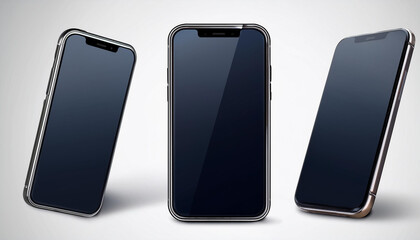Smartphones have become indispensable tools in modern life, revolutionizing the way we communicate, work, and entertain ourselves. These pocket-sized devices combine the functionality of a phone with the power of a computer, enabling us to perform a wide range of tasks on the go. With constant technological advancements, smartphones have evolved to include features like high-resolution cameras, powerful processors, and vast app ecosystems, making them essential gadgets for people of all ages. Today, smartphones are not just communication tools but all-in-one devices for personal, professional, and recreational use.
Types of Smartphones: Choosing the Right One for You
When choosing a smartphone, it’s important to consider the type that best suits your needs. Flagship smartphones from brands like Apple, Samsung, and Google offer top-tier performance, cutting-edge features, and premium designs. Mid-range smartphones provide excellent performance at a more affordable price, making them a great option for budget-conscious users. Entry-level smartphones offer essential features and are ideal for those looking for a no-frills device. Additionally, some brands focus on specialized features, such as gaming smartphones with enhanced graphics and cooling systems or camera phones designed for photography enthusiasts.
Smartphone Operating Systems: Android vs. iOS
The two dominant smartphone operating systems are Android and iOS, each offering a unique user experience. Android, developed by Google, is known for its customizability, offering users a wide range of devices and the ability to tweak settings. It supports a large variety of apps available on the Google Play Store. iOS, developed by Apple, is known for its seamless integration with other Apple devices, a user-friendly interface, and a tightly controlled app ecosystem. Both operating systems have their strengths, and the choice largely depends on personal preference and the broader device ecosystem you are part of.
Smartphone Features: Key Aspects to Consider
Smartphone features vary significantly between models, so it’s essential to evaluate what matters most to you. Camera quality is a major consideration, with many modern smartphones offering multiple lenses, high-resolution sensors, and advanced software for superior photography and video. Battery life is another crucial feature, with some phones offering fast charging or battery-saving modes. Performance, including processor speed and RAM, impacts the phone’s ability to handle multitasking and gaming. Other factors to consider include display quality (OLED vs. LCD), storage options, and additional features like 5G connectivity or water resistance.
The Role of Smartphones in Productivity
Smartphones have transformed how we work and stay productive. With various productivity apps for email, note-taking, calendar management, and document editing, smartphones allow users to complete tasks from virtually anywhere. Collaboration tools like Google Drive, Microsoft Office, and Zoom enable seamless communication and teamwork across distances. Additionally, smartphones can serve as portable hotspots, allowing users to access the internet when there is no Wi-Fi available. As the workforce becomes more mobile, smartphones play a pivotal role in helping individuals stay connected and efficient, making them essential tools for modern productivity.
Conclusion
As technology continues to evolve, the future of smartphones looks promising, with innovations on the horizon that will redefine how we interact with our devices. Foldable smartphones, which offer larger screens while maintaining portability, are becoming more mainstream. Enhanced AI and machine learning capabilities will make smartphones smarter and more intuitive, capable of anticipating user needs. Additionally, advancements in 5G connectivity will enable faster data speeds, unlocking new possibilities for gaming, streaming, and remote work. As augmented reality (AR) and virtual reality (VR) technologies improve, smartphones will likely become central hubs for immersive experiences and new applications.
